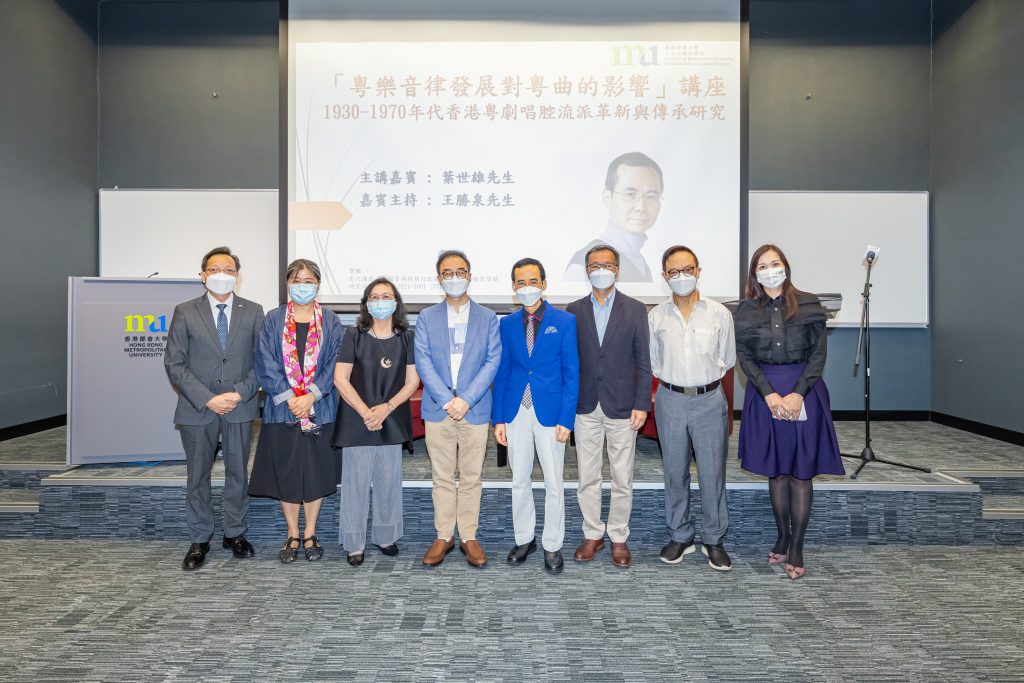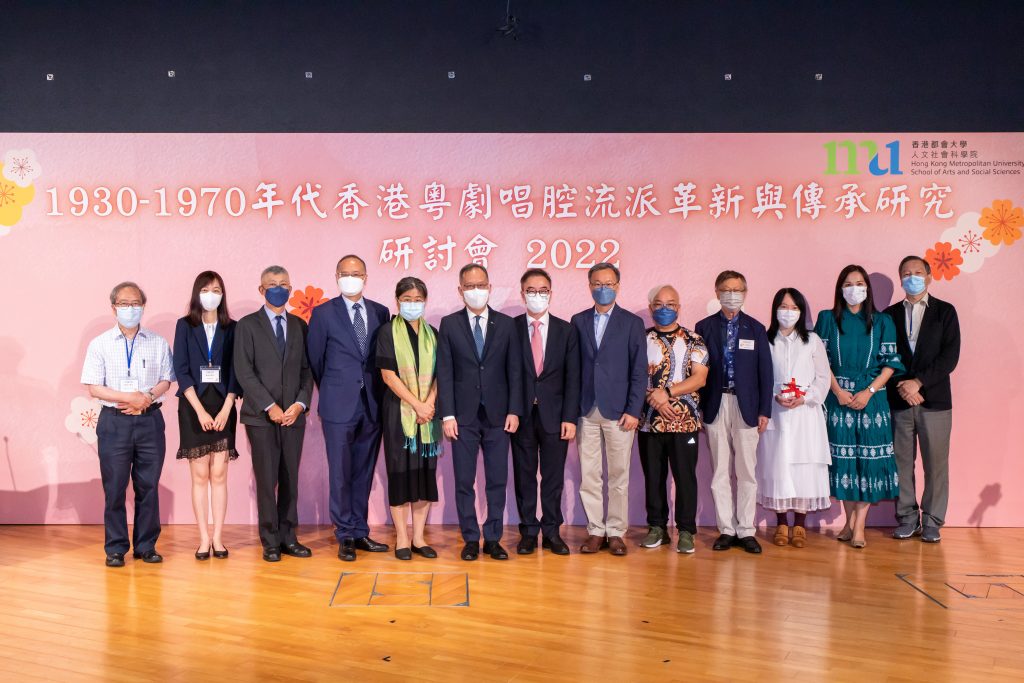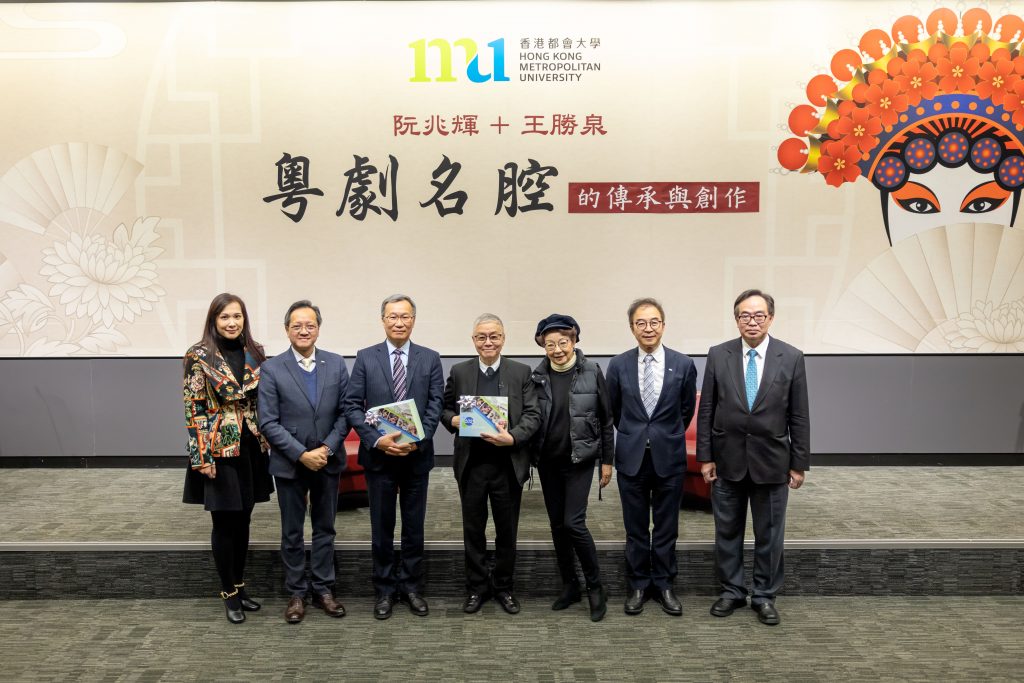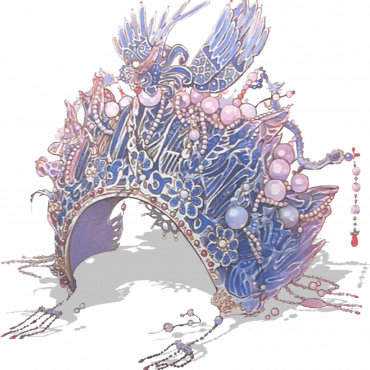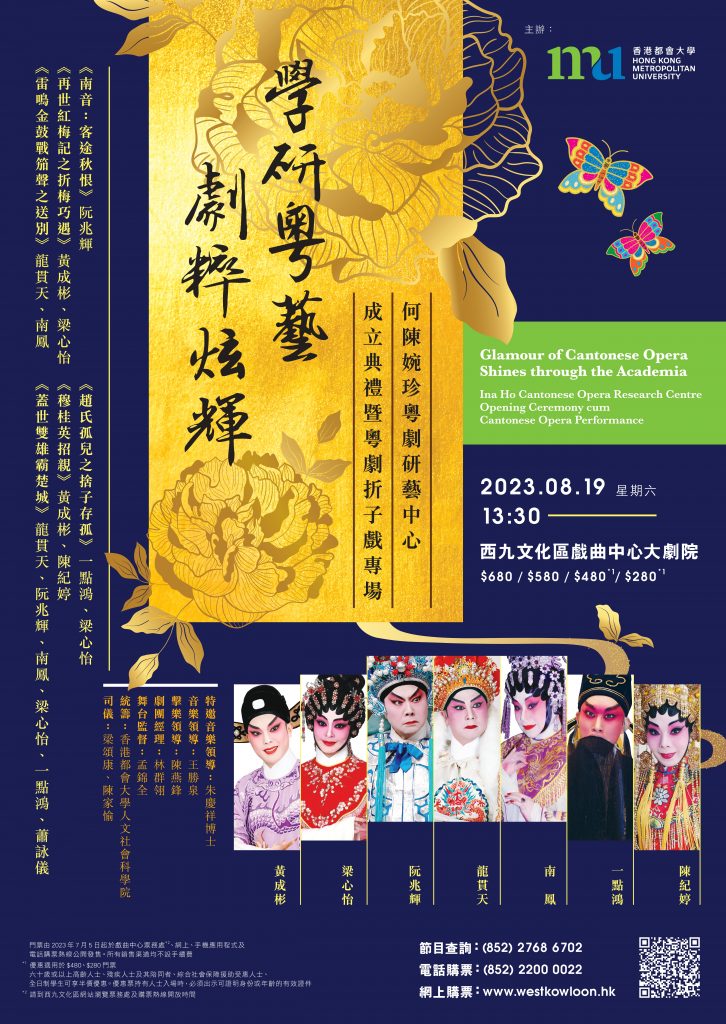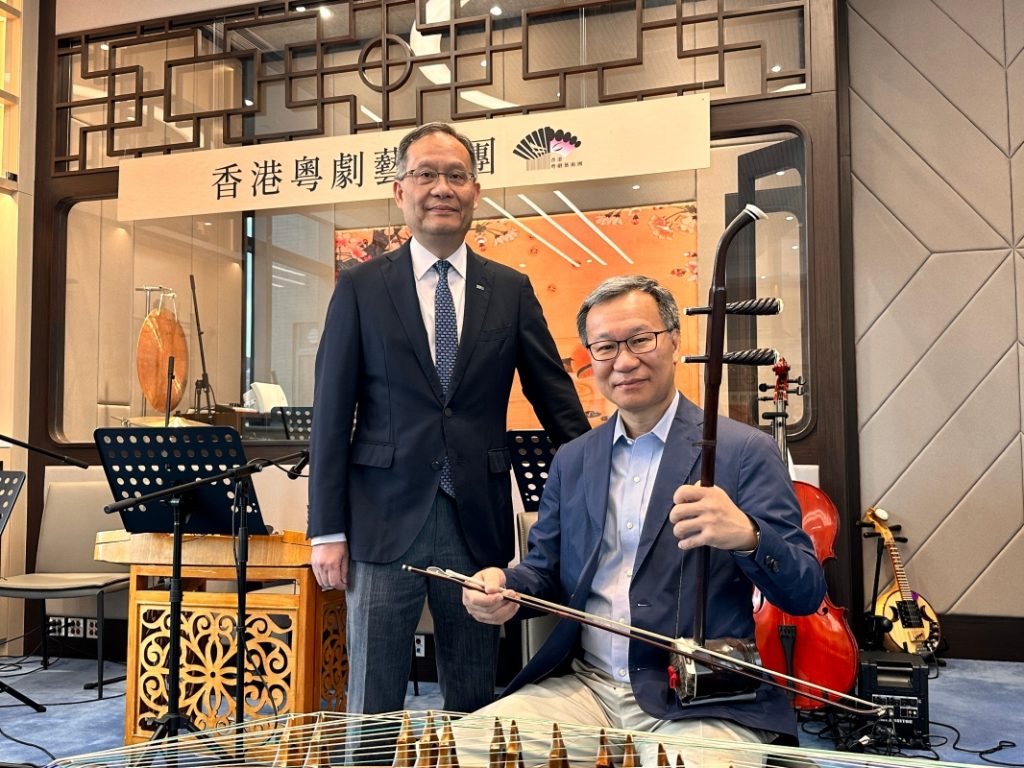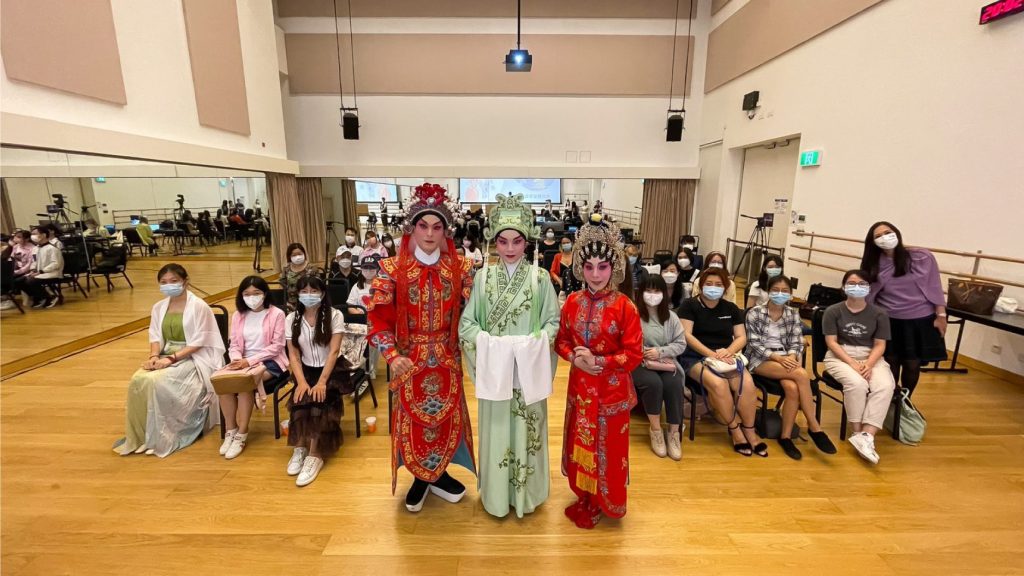Cantonese opera, being an indigenous art form, has been recognized in the “Intangible Cultural Heritage of Humanity on the Representative List” of UNESCO since 2009. The four refined operatic techniques of Cantonese opera are, namely, “singing” [chang 唱], “dialogues” / “monologues” [nian 唸], “gestures” [zuo 做] and “actions” [da 打], with “singing” serving as the pioneering component – singing styles are inevitably put in the limelight. Varieties of Cantonese opera singing styles were analyzed and examined from different perspectives by various scholars and practitioners in the industry. For instance, some studies focused on the aesthetic features of the performers' singing styles (on tonal and rhythmic characteristics) (Ho, 2007); some others put the assessment judgement to aria in vocal music arrangements, techniques in lyric projections and thus the expression of sentiments (Wong, 2007); while scholars like Ching remarks that it is convenient for the “slow rhythms” of Cantonese opera to eventually produce artistic sensitivities in banghuang 梆黃 (“music in the modes of Bong zi 梆子 [bangzi] and Ji wong 二黃 [erhuang], an aria type music)” (Chan, 1991) in her volume Law Ka-po, a Well-known Performer from the Commons (2011). Any performer should “aim at perfection in his/her aria and adjusting his/her progressive rates in order to adapt to the 'content' of the opera scripts” (ibid.). Although all three of the above perspectives are feasible, researchers still have to dig more into how practitioners learn the differentiation between the nine speaking tones in the Cantonese dialect, how they enhance their singing techniques by permeating their specific voices into the vocal music setting, and how they should acquire the skills from famous actors to act an impromptu performance.
Now, many scholars state that Cantonese opera reformation is experiencing a bottleneck (Leung, 2015), where the renewals of the scripts and the vocal music have been stagnated. All this explains the importance of recording and analyzing the distinctive features of the famous opera performers' arias and the transformation of such. This research is to be done in an oral history recording and in different deliverables such as research seminars, a book volume concerning the oral history collected, and an electronic archive. It focuses on revealing the singing styles of different schools from the 1930s to the 1970s; performance practices in various eras; ways of memorizing lyrics and scripts under certain systems; and impacts on criticizing and judging the art from the audience's and the practitioners' angles upon the popularity of Cantonese opera recordings.
In terms of theoretical framework, the Theory of Creativity will be adopted for analysis in this project, which helps in understanding how the above factors affect the initiation and thus heritage of the new singing styles. The theory is usually applied in the domain of creative teaching and learning, which means many scholars and teachers tend to believe that students' creativities should not be limited to their inborn natures, but should also be revealed and continuously developed from the process of learning and socialization (Xu and Liu, 2003). The same logic should also be applied to singing styles of Cantonese opera, which is not yet popular though. Leung (2017) once analyzed the creative and developmental aspects of Sit Kok-sin's opera, and this project will further scrutinize the new development of creative operatic singing styles, in order to upgrade the value of oral history and related studies.
粵劇於2009年獲聯合國列為「人類非物質文化遺產」,其文化價值不容置疑。[1] 粵劇四種基本演繹方式包括「唱、做、唸、打」,當中以唱為首要,可見唱腔在粵劇中的地位。不同唱家和學者對粵劇唱腔有著不同的理解和研究,有的以名伶唱腔的藝術特點(聲律美與節奏感)作分析依據 (周仕深、鄭寧恩,2008);(何梓焜,2007);有的以拉腔發口,與如何發揮曲中情緒作為準則(王勝焜,2007);而程美寶在《平民老倌羅家寶》(2011) 一書中點出,粵劇的「慢節奏」使梆黃唱腔最容易營造出韻味,唱者「在唱腔方面其實一直在完善自己,調整自己適應『內容』的步伐」。這三種說法各自成理,但如何幫助後學利用粵音九聲,並利用個人發聲特質融入在粵劇唱腔之中仍是須再作研究的課題;我們亦須了解名伶習曲、從即興基礎上加以發揮。
此外,現時不少學者 (如梁寶華,2015) 指出,粵劇革新正面對瓶頸,不論是劇本的創新或是唱腔的創新,亦與人一種停滯的狀態。故此詳細記錄不同流派名伶唱腔及演變為最重要。是次研究會以口述史方式作記錄,並會以研討會、口述歷史書籍、電子檔案紀錄等展現研究成果,並記錄1930 – 1970年代不同流派的唱腔,不同年代的習曲方法、因制度化而衍生的記譜方法、以及粵曲錄音大行其道後如何影響觀眾及習曲者的審美和批判標準。
最後,研究會以創造理論作分析框架,詳論上述元素如何影響新腔的形成與承傳。創造理論多應用於創新教學研究,不少學者和教師都普遍相信學生的創造力不僅是一種天賦的能力,也可以從教育和社化過程中持續發展出來 (許娜娜、劉誠,2003 ),在粵劇唱腔上亦然,但其應用則未見普及。2017年,梁寶華曾以創造理論分析薛覺先粵劇的創造和發展,而本研究將會進一步系統化地應用此理論於唱腔創新的分析之上,藉以提高口述史的價值。





